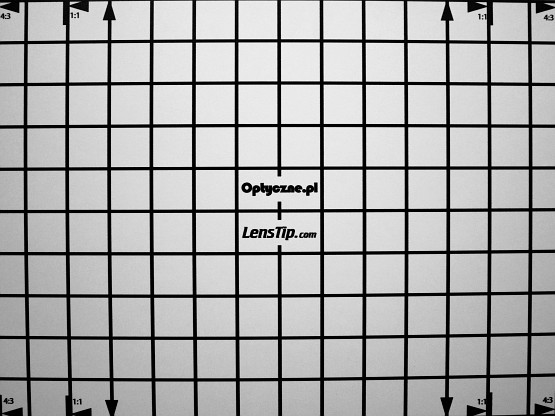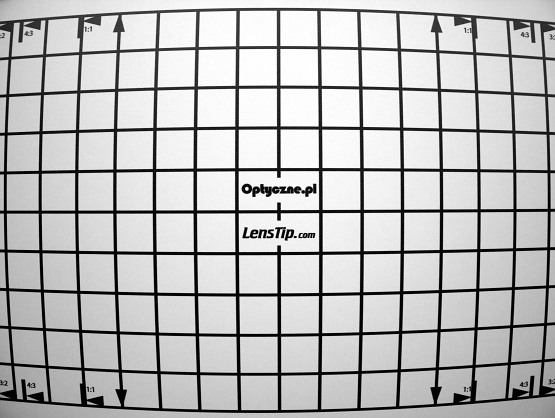Panasonic G 14 mm f/2.5 ASPH.
6. Distortion
When we pass to the wide angles of view the situation changes. Buying a Panasonic 2.5/14 I count on having a field of view of 75 degrees; after all that’s why I’m purchasing a wide-angle device – to have the widest angle possible. Every limitation of that field is a big drawback. That’s why I hoped the Panasonic would try to correct the distortion just a little bit. Unfortunately it surrendered without putting a fight. Taking photos in RAW format we must also take into account a monstrous level of barrel distortion, measured by us as –6.37%.
Of course we can shoot in JPEG format or correct the distortion during the computer processing later. The problem is that our field of view doesn’t amount to 75.4 degrees anymore. A rough calculation, based on our test charts, shows that it might be even 5 degrees less. The lens practically becomes an equivalent of full frame 31 mm, not a 28 mm device.
Please Support UsIf you enjoy our reviews and articles, and you want us to continue our work please, support our website by donating through PayPal. The funds are going to be used for paying our editorial team, renting servers, and equipping our testing studio; only that way we will be able to continue providing you interesting content for free. |
- - - - - - - - - - - - - - - - - - - - - - - - - - - - - - - - - - - - - - - - - - - - - - - -
Attention! Added Nov. 20, 2010
Writing the paragraphs above I assumed the focal length of the lens and its field of view were supposed to be closely bound up with the optics and not with the image corrected by the body. Different bodies can feature different correcting algorithms after all and because of that the resulted field of view can differ; however it shouldn’t do so – we provide it for one given and specific lens.
As our assumption has been met with many controversies, we decided to check very accurately the real value of the tested lens’s field of view. In order to do so we photographed star-filled sky and, basing on the Turner method, we calculated the transformation coefficients from the position(x,y) in pixels on the JPEG file to the equatorial coordinates of the stars visible on the sky. Then simple formulas of spherical trigonometry allowed us to calculate directly the lens’s diagonal field of view. The result we got amounted to 75.1 degrees within the margin of error of 0.2 of a degree. It turns out the Panasonic company really provided the field of view of the already corrected image and the field before that corrections is ca. 80 degrees, suggesting at the same time that the real focal length of the lens is, in fact, closer to 13 mm than those 14 mm, stated in the specifications.
| Olympus E-PL1, JPEG | |||

|
|||
| Olympus E-PL1, RAW | |||

|
|||






